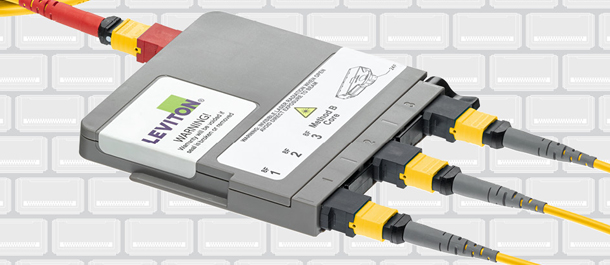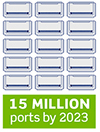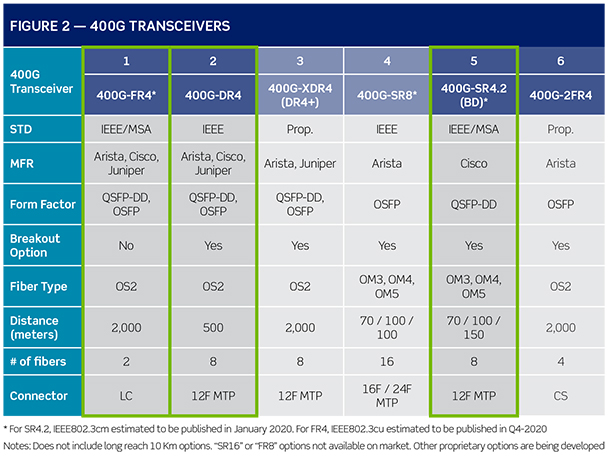Looking Ahead to 200 and 400 Gb/s Networks

As 400 Gb/s switch options entered the market only recently, adoption has yet to take off. However, many expect 400 Gb/s to see real adoption in 2020. According to the Dell’Oro Group, a leading data center market analysis firm, 400 Gb/s shipments will most likely reach 15 million ports by 2023.
 The draw? The new 400 Gb/s switches bring not only faster speeds but greater network density. The ability for switches to enable high density breakout scenarios with 100 Gb/s ports translates into a lower total cost of ownership per port. The early adopters will be large cloud providers, who continue to gobble up more data center space.
The draw? The new 400 Gb/s switches bring not only faster speeds but greater network density. The ability for switches to enable high density breakout scenarios with 100 Gb/s ports translates into a lower total cost of ownership per port. The early adopters will be large cloud providers, who continue to gobble up more data center space.
NEW 400 GB/S TRANSCEIVERS AND STANDARDS
There are two major transceiver form factors for 400 Gb/s. QSFP-DD (quad small form-factor pluggable, double density) transceivers can support up to 32 ports in a 1RU switch, and are backwards compatible to QSFP+ and QSFP28 options.
OSFP (octal small form-factor pluggable) transceivers can also support up to 32 ports in a 1RU switch and accept the same connector types, and can become backwards compatible with QSFP ports with the use of an adapter.
One wildcard is the number of fiber strands that will be used to deliver 400 Gb/s. Currently, switch manufacturers have plans for connectors with 2, 8, 16, 24, and even 32 fibers. While there are now a range of options, a few favorites are emerging.
With 200 Gb/s transceiver options, only two are available on the market today: 2x100-PSM4 single-mode and 2x100-SR4 multimode, as highlighted in Figure 1. These are proprietary options, and both rely on 24-fiber MTP connectors. While transceiver options using two LC fibers or 8-fiber MTP connectors (columns 1, 2, and 4) are defined in IEEE standards, they have not yet been introduced to the market.

The transceivers outlined in Figure 2 (columns 1, 2, and 5) highlight the options likely to become the most common over the next several years. Both 400G-FR4 and 400G-SR4.2 are currently in development by IEEE.

Note that the majority of 100, 200 and 400 Gb/s transceiver options are for single-mode networks, due to the bandwidth and distance capabilities. This trend is also partially a result of decreasing cost. As this trend continues, the market will find single-mode to be more enticing.
CHOOSING A FORWARD-LOOKING MIGRATION PATH
Leviton's single-mode and multimode cabling systems not only meet current bandwidth requirements, but also provide the flexibility needed to meet future network demands, including 100G, 400G, and beyond. These systems include high density patching, solutions for fast deployment, and customizable trunks and cable assemblies that give data center managers the exact solution they need, delivered fast.
To learn more, read our latest white paper covering 400 Gb/s transceiver options and standards, plus extensive topologies and use cases: “Cabling Strategies for 400 Gigabit Networks”


